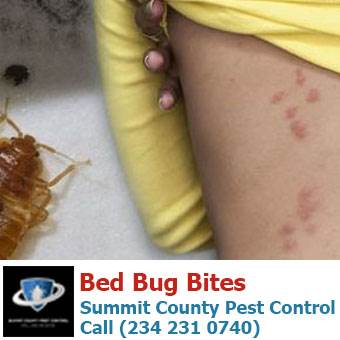Understanding the Lifecycle of Insects for Targeted Control Strategies
Recognizing the lifecycle of bugs is a basic element of effective pest management techniques. With a deeper understanding of how insects progress and thrive, tailored control techniques can be created to address details factors in their lifecycle, eventually leading to even more successful insect management results.
Value of Understanding Bug Lifecycle
Recognizing the lifecycle of insects is necessary for creating reliable and targeted control strategies in pest monitoring. By understanding the various phases a bug goes with from egg to adult, pest control specialists can determine prone points in the lifecycle where treatment can be most successful.
In addition, acknowledging the details ecological conditions necessary for every stage of the pest's lifecycle can lead decisions on habitat alteration or exemption methods to minimize and interfere with the lifecycle bug populaces. This understanding allows pest monitoring professionals to execute positive measures rather than relying entirely on responsive therapies, resulting in more long-term and sustainable insect control options. Inevitably, an extensive understanding of insect lifecycles equips bug control professionals to tailor their approaches successfully, taking full advantage of and lessening ecological effects control results.
Key Phases in Pest Advancement
To successfully implement targeted control approaches in insect management, an essential facet lies in thoroughly determining and recognizing the key stages in bug growth. Pest advancement normally contains a number of crucial phases that are essential for their lifecycle and administration. The initial stage is the egg stage, where pests lay eggs that later hatch into larvae. Larvae then advance right into pupae, a phase where they go through metamorphosis prior to arising as grown-up insects. Recognizing these stages is vital as it aids in determining weak spots in the lifecycle where control steps can be most effective.

Susceptabilities in Insect Lifecycle
Throughout the different phases of a pest's lifecycle, distinctive susceptabilities arise that can be tactically targeted for effective control actions (A1 Bed bug Exterminator houston). One essential vulnerability lies in the egg phase, where parasites are typically a lot more susceptible to certain pesticides or organic control agents due to their soft external covering, making them easier targets for intervention. Comprehending these vulnerabilities in the bug lifecycle is essential for establishing reliable and exact control approaches that successfully take care of bug populations while reducing ecological effect.
Carrying Out Targeted Control Steps

Implementing targeted control steps commonly includes a multi-faceted technique. This might consist of habitat modification to make the environment less hospitable to parasites, such as removing standing water for mosquito control or securing access factors for rats. In addition, organic control techniques can be utilized, where all-natural killers or pathogens are presented to keep bug populaces in check.
Integrated Insect Administration (IPM) strategies that incorporate different control steps in a worked with and lasting fashion are usually the most efficient in achieving long-lasting parasite monitoring objectives. By implementing targeted control actions based on a thorough understanding of insect lifecycles, bug populations can be successfully managed while decreasing threats to human health and wellness and the environment.
Boosted Pest Monitoring Practices

Furthermore, the unification of biological control representatives, such as natural killers or pathogens of parasites, can help decrease reliance on chemical pesticides and promote a much more balanced environment. Implementing physical obstacles and traps can also be component of enhanced bug monitoring methods, offering non-toxic and targeted options for bug control. Additionally, using pheromones and other semiochemicals can interrupt pest mating patterns and interaction, causing reduced pest populations gradually.
Conclusion
By recognizing vital stages in pest development and vulnerabilities in their lifecycle, targeted find more control steps can be you could look here applied to reduce insect populaces. Improved insect administration techniques can aid reduce the reliance on broad-spectrum pesticides and advertise even more sustainable and ecologically pleasant bug control techniques.
Recognizing the lifecycle of pests is necessary for establishing reliable and targeted control approaches in pest administration. By comprehending the various stages a pest goes via from egg to adult, insect control professionals can recognize vulnerable points in the lifecycle where intervention can be most effective. Inevitably, a complete understanding of parasite lifecycles empowers bug control professionals to tailor their approaches successfully, maximizing and minimizing ecological influences control end results.
By executing targeted control actions based on a comprehensive understanding of bug lifecycles, bug populations can be properly managed while minimizing risks to human wellness and the setting.
By determining crucial phases in parasite advancement and vulnerabilities in their lifecycle, targeted control steps can be carried out to lessen bug populations.